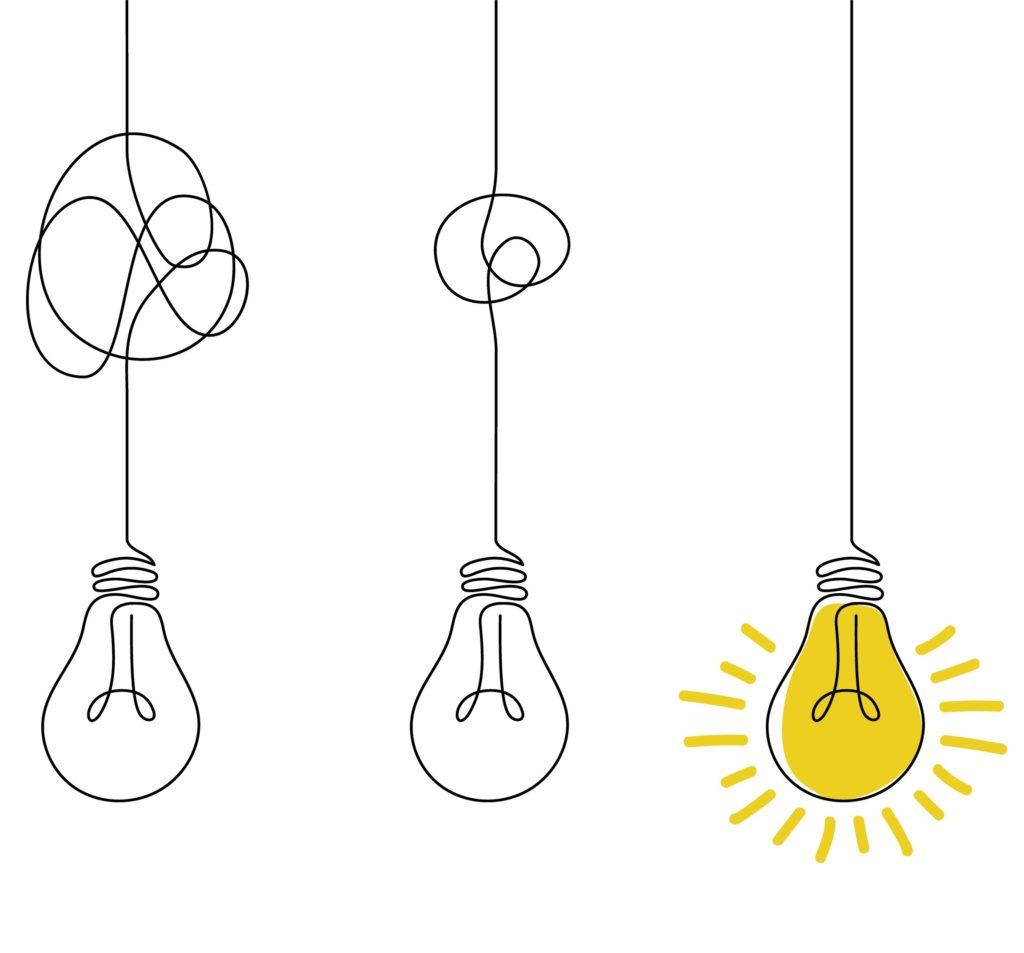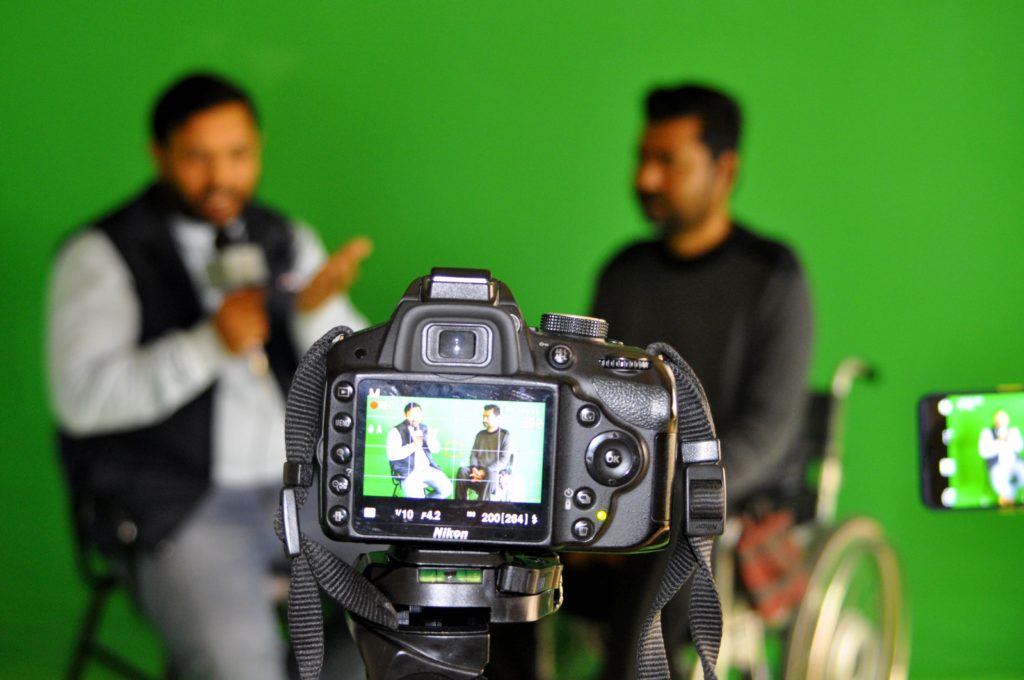Six Things You Need To Know About Body Language
In our media training workshops, our clients are usually shocked to learn how much they communicate with their body language – and how little they know about what their bodies are saying.
They often joke that they wouldn’t want to play poker against me, since I’d be able to easily read whether or not they’re bluffing. I assure them that if that were true, I’d have retired by age 30 and would be relaxing on my private island hideaway by now.
Still, it’s true that being able to monitor your own body language – and read the body language of others – offers you great advantages as a communicator.
In this blog post, I’ll discuss six things you need to know about body language.
1. Most People Overestimate Their Energy Level: When I conclude a mock interview during our media training workshops, I ask the trainee to rate on a ten scale how much energy she thought she had during the interview. “Oh, around a seven or eight,” she’ll usually guess. I then ask the other people in the room to rate their colleagues’ energy. They usually rate it a four or five. Turns out, we’re lousy judges of how energetic we appear to others, and most people benefit from boosting their energy level 10-15 percent.
2. Stop Thinking and Look At Me: When we speak, we maintain eye contact just 40-60 percent of the time. That’s because we’re busy trying to access information from our brains – depending on the type of information we’re trying to retrieve, we look to up to the left, up to the right, or down. But in the context of a media interview or speech, that lack of eye contact can signal nervousness or evasiveness. You can help maintain better eye contact if you pause briefly before answering a question, which will allow you to access the information you need before you begin speaking.
3. Gesturing Makes Your Words Better: Whenever we encourage spokespersons to incorporate gestures into their deliveries, we consistently find that their words get better. The physical act of gesturing helps them form clearer thoughts and speak in tighter sentences with more declarative language. So the next time you give a speech or interview (or speak with your boss or a client), gesture as naturally as you typically would in everyday life. Your words will come to you more easily – and the words you use will be stronger.
4. When You’re Defensive, You Remember Less: Allan and Barbara Pease, authors of The Definitive Book of Body Language, report a fascinating finding from one of their studies. When a group of volunteers attended a lecture and sat with unfolded arms and legs, they remembered 38 percent more than a group that attended the same lecture and sat with folded arms and legs. If you see your audience exhibiting defensive body language, change tactics – and don’t try to persuade them to your point-of-view until their body language opens up.
5. Your Feet Point The Way: Your feet subconsciously tell you where you want to go. Next time you’re in the middle of a conversation you wish you could exit, look at your feet. You might be surprised to find that they’re not both pointing directly at the person with whom you’re speaking. The same is true for other people, so if you’re not sure whether the person you’re speaking with is truly interested in your conversation, just look at his feet.
6. If You Smile, They Smile: We subconsciously imitate the things we see. When I look at someone and smile, they tend to smile. When I look at someone and nod, they tend to nod. Some neuroscientists say that type of mirroring behavior is due to “mirror neurons.” That’s important information, because audiences that are smiling and nodding are more receptive to your ideas. So smile and nod at appropriate moments, and you’ll be that much closer to accomplishing your goals.




Interesting information. Thanks!
Thanks for the great stuff throughout the year. On the non-verbal body language issue, has there been any research done on the effect of body size in relation to the credibility of the communication? In an era when we idolize everything, I wonder what effect the same message would have when delivered by a fat guy and an then a skinny guy? It reminds me of controls that used be in place for gender bias in communication. I’ve just never seen anything done on body size or fitness levels. You know, would I be more likely to listen to a buff athlete than a middle aged balding fat man. Just wondering. I’d be interested in your hearing your thoughts.
Greg –
Thank you for your loyal readership and for your question.
The direct answer to your question is: “I don’t know, but I’ll try to find out.”
Here’s what I do know: A lot of research through the years has confirmed that taller men have bigger salaries, on average, then short men. (I’ve also seen some research to suggest taller men tend to live longer.) Every presidential winner since 1952 has arguably had the better hairline – and most of the winners have been the taller of the two candidates.
Regarding weight, I suspect the answer depends on the context. No one is going to take Mario Batali less seriously as an Italian chef because of his girth, but many use girth size against NJ Governor Chris Christie, who is taken less seriously by some who regard his weight as a character issue (I’ve never heard that claim made against Batali).
I’ll try to learn more, and will post it to the blog if I do.
Thanks again, and Happy New Year!
Brad
That’s so true about the feet. Several times, I’ve noticed my feet trying to leave before my face!
I appreciate that most of these 6 tips are different from the usual ones people write about body language, so thanks for raising them.
You might also be interested in this critique of Allan Pease’s TEDx talk on body language.
I loved his talk and his content, but when I analysed his call to action and other aspects, I noticed some key issues. (It would’ve been so much better without those, so I suggested some edits to the closing!)
There’s been an active discussion in the comments on that post (and on the related post about “body-language BS”), so would love to hear your views too.